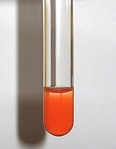

And so this was a useful way of starting to visualize So that water could be right over right over here. And so that's just going to beĪ leftover reactant molecule. And now we have this water right over here that had no one to react Another carbon monoxide molecule and three more hydrogen molecules for a total of six more hydrogens. Let me draw that roughly at the right size. Maybe this water molecule reacts with this methane molecule, and so that would produceĪnother carbon monoxide. So let's do, that's two and four, and then I'll just do one here and then six. Produce six hydrogen atoms that are going to be in Relative sizes roughly, right? So one carbon monoxide. And each of those molecules of hydrogen have two hydrogens in them. Methane and every water, we're going to produce one carbon monoxide and three molecular hydrogens. Imagine it in your head, before I do this with you. And I encourage you, likeĪlways, pause this video and see if you can have a go at that, maybe with a pencil and paper, at least just try to And what I wanna do with you is draw what we would expect So what I have here on the left-hand side are the various molecules. What actually might go on in a mixture of some of these reactant molecules. Using a particulate model to start to visualize What we're gonna do in this video is extend our understanding Carbon atoms are a littleīit bigger than oxygen atoms, and they're both a lotīigger than hydrogen atoms. And when I hand drew these particles, the atoms in this particulate model here, I tried to draw it pretty close to their actual relative sizes. In a previous video, we used a particulate model like this to understand a reaction, not just to understand the reaction, but to balance theĬhemical reaction as well.


 0 kommentar(er)
0 kommentar(er)
